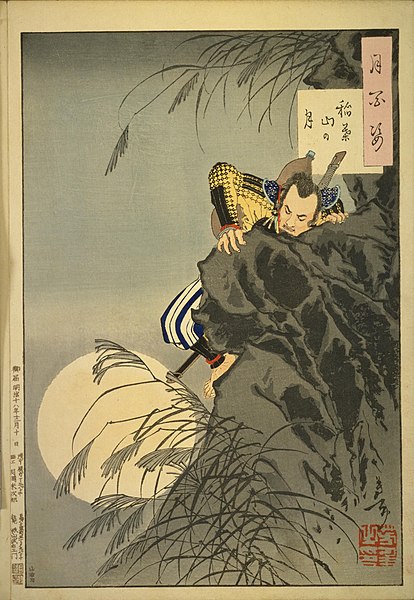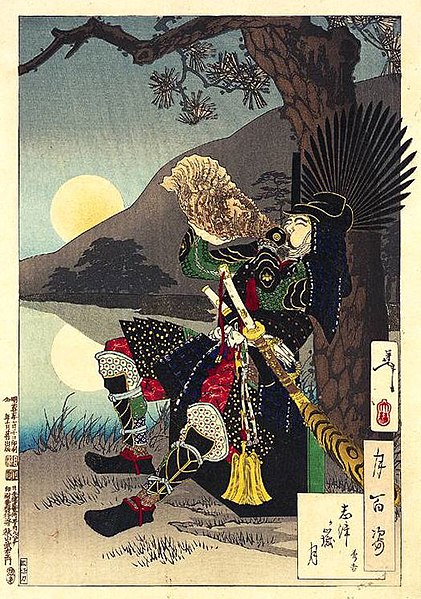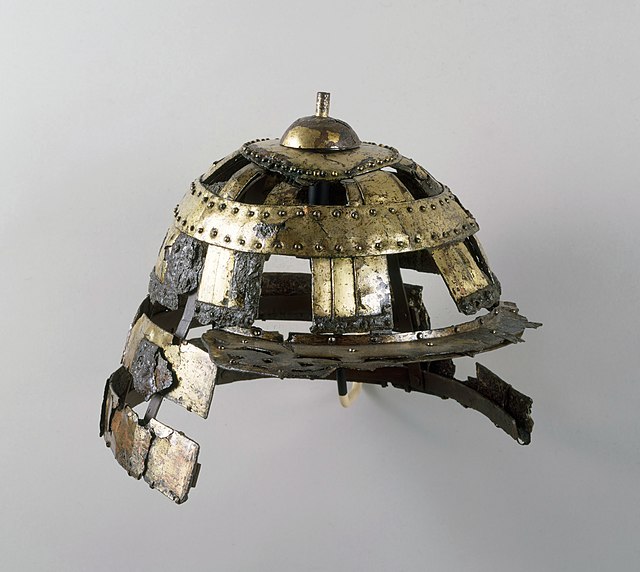Toyotomi Hideyoshi , otherwise known as Kinoshita Tōkichirō and Hashiba Hideyoshi , was a Japanese samurai and daimyō of the late Sengoku and Azuchi-Momoyama periods and regarded as the second "Great Unifier" of Japan. Although he came from a peasant background, his immense power earned him the rank and title of Kampaku and Daijō-daijin , the highest official position and title in the nobility class. He was the first person in history to become a Kampaku who was not born a noble. He then passed the position and title of Kampaku to his nephew, Toyotomi Hidetsugu. He remained in power as Taikō (太閤), the title of retired Kampaku, until his death. It is believed, but not certain, that the reason he refused or could not obtain the title of shogun (征夷大将軍), the leader of the warrior class, was because he was of peasant origin.
Nakamura Park in Nagoya, traditionally regarded as Hideyoshi's birthplace
One Hundred Aspects of the Moon No. 6, by Yoshitoshi: "Mount Inaba Moon" 1885, 12th month. The young Toyotomi Hideyoshi (then named Kinoshita Tōkichirō) leads a small group assaulting the castle on Mount Inaba.
One Hundred Aspects of the Moon No. 67, by Yoshitoshi: The Moon and Hideyoshi at the Battle of Shizugatake.
Battle standards of Toyotomi Hideyoshi
Samurai were the hereditary military nobility and officer caste of medieval and early-modern Japan from the late 12th century until their abolition in the late 1870s during the Meiji era. They were the well-paid retainers of the daimyo, the great feudal landholders. They had high prestige and special privileges.
A samurai in his armour in the 1860s. Hand-colored photograph by Felice Beato
A Kofun period helmet, gilt copper, 5th century, Ise Province
In the noh drama Sanjō Kokaji, the 10th-century blacksmith Munechika, aided by a kitsune (fox spirit), forges the tachi (samurai sword) Ko-Gitsune Maru.
Taira no Masakado attacking an opponent on horseback (Yoshitoshi)








